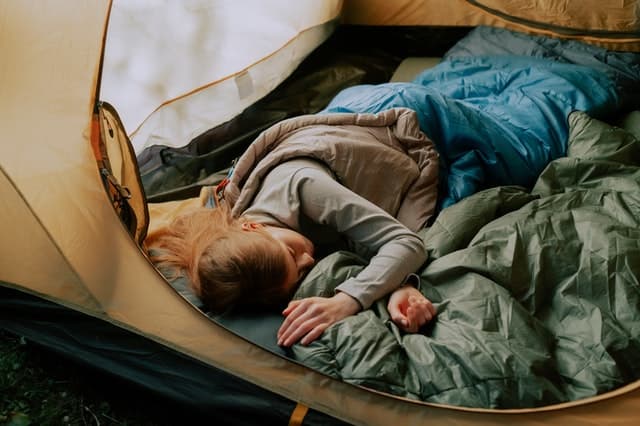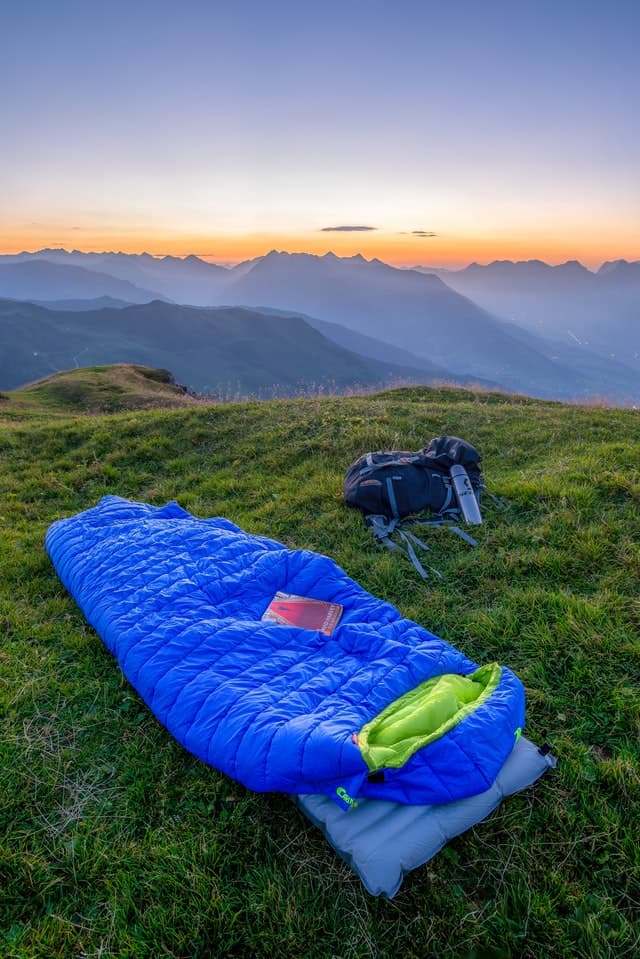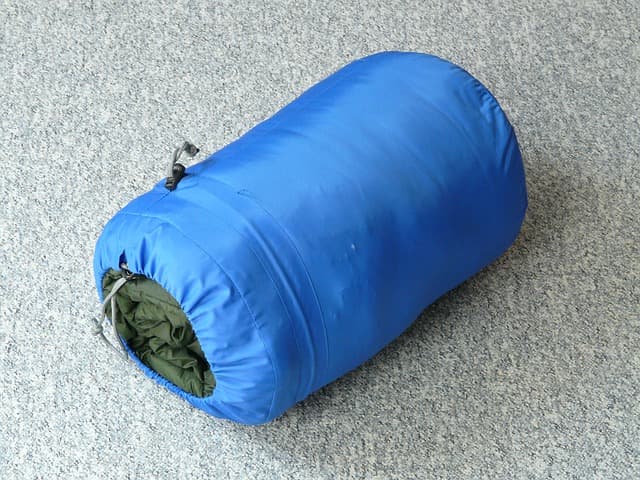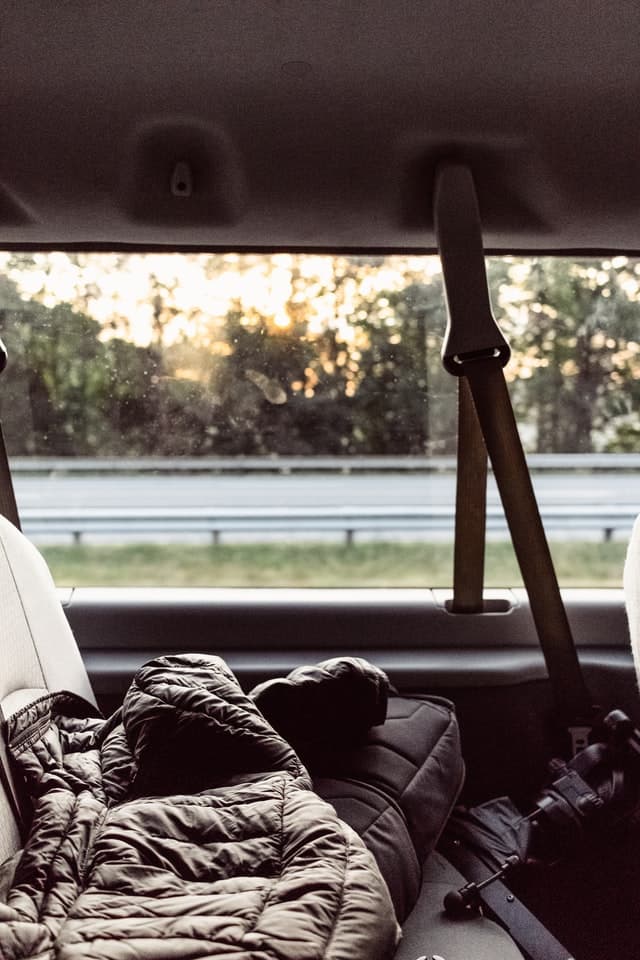Camping trips are always a fun experience. There’s nothing better than getting away from the hustle and bustle of city life and enjoying nature up close. But before you go, it’s important to make sure that your equipment is in good condition for any weather conditions you may encounter during your trip.
One essential item that needs to be checked off the list before departing on adventure is a sleeping bag – after all, no one wants to get stuck freezing at night when they’re supposed to be resting! For this article, we will discuss the various aspects of choosing a sleeping bag for camping so that you can have an enjoyable time out in nature!
What To Look For When Choosing Your Sleeping Bag
Choosing the right sleeping bag can be difficult. The climate you will be camping in is important when it comes to tent size and shape, as well as what type of sleeping bag to purchase – whether down or synthetic. Shape also makes a difference with some being more suitable for backpacking while others are better suited for car camping trips.

Temperature Rating For Your Sleeping Bag
Consider the climate of your camping trip when you choosing your sleeping bag. Your sleeping bag manufacturer will almost always advertise a temperature rating. The rating is typically a number like 20, 30 or 40 degrees Fahrenheit. The lower the temperature of your camping destination, the higher degree sleeping bag you will need to purchase. You may also want to consider bringing a liner for those colder nights!
Sleeping bags are given a two digit temperature rating. For example, 20 degrees Fahrenheit (F), which means it can keep someone warm at that temperature for an hour or more in still conditions and sleep comfortably to about 40 degrees F.
To get a sense of how cold it is going to be, you can perform a Google search to find the average nightly temperatures in the month you’re planning for your trip.
Styles, Shapes and Sizes (Mummy-style vs Rectangular)
Campers should take note of what shape their body is before purchasing their sleeping bags so that there isn’t any discomfort while out camping away from home!
There are two things to consider when choosing a sleeping bag for your camping trip: size and weight capacity. Depending on the duration of your trip, you’ll need to determine which is more important to you; if it’s a short three-day excursion, we recommend opting in for less space as it will be easier to carry around. If you’re planning on staying out for a week or more, we recommend choosing the larger size so that you can spread out and have plenty of space when it is time to rest your head!
A mummy-style sleeping bag is the new craze but certainly not necessary. However, they are easier to pack, consume less space, and look pretty neat.

You’ll also want to keep in mind the temperature rating of your bag since most are available in three different categories
Down Vs Synthetic
Comparing a down sleeping bag vs a synthetic sleeping bag comes down to pricing and durability. Synthetic sleeping bags tend to be cheaper, hypo-allergenic, and offers better insulation when wet. On the other hand, down sleeping bag benefits include being made from natural materials, being lightweight and breathable.
Down sleeping bags are more expensive than synthetic sleeping bag options because they’re filled with down feathers which can be an expense to purchase. They also tend to lose their insulation when wet, so it is important to keep the moisture away in order for your body heat to stay inside!
Popular Sleeping Bag Features You May Need
Modern sleeping bags are much fancier than what your parents used back in the day, and come with a boat-load of useful features (some you may not even have known about). For example, some bags come with compression stuff sacks for packing up the bag into easily transportable little package that takes up minimal space in your camping gear!

Look for other sleeping bag features such as:
- Over-sized hoods to protect your head and neck from drafts
- Zipper-less designs that offer two ways of entry into the bag- one on the top and another at the bottom so you can crawl in feet first or get out without having to zip yourself up (great for kids!)
- Extra waterproof designs for camping trips in wetter conditions
- Storage built into the sleeping bags for valuables
- Easy cleaning materials used
With all that in mind, you can now choose the right sleeping bag!
Comfort
More than anything, the comfort of your sleeping bag is arguably the most important factor in your decision before buying. Be sure to try out your sleeping bag before your trip, even for an hour or so in your living room. The last thing you’ll want is to be uncomfortable when sleeping overnight in the outdoors.

Other Similar Considerations
The temperature rating of your sleeping bag is something you’ll want to pay close attention to. We recommend choosing a temperature rating that is at least 10 degrees higher than what the coldest temperature you’re expecting to camp in.
Keep in mind, you can always peel away a blanket but it is hard to warm up when it gets too cold!
A sleeping pad for camping is something you’ll never do without after using one. The benefits of a sleeping pad include more insulation, padding and cushioning which can make your sleep more comfortable.
We recommend choosing a pad that is at least as thick as the coldest temperature you’re expecting to camp in or even several degrees higher if possible. This will help keep you nice and warm all night long!
It is not necessary to actually wash a sleeping bag or pad after each trip, but you might want to do it for the sake of sanitation and odor control if it has been used in a contaminated environment like around skunks or rodents. If you camp with dogs, you’ll certainly want to wash it between trips.
The best way to clean any outdoor gear is with soap and water – mild dishwasher soap. Make sure to thoroughly rinse with water to remove all traces of soap.
The best way to dry a sleeping pad is in the sun, or if that’s not an option then use your clothes dryer on low heat for 20 minutes followed by 20 minutes outside in the sun and over night air drying. Doing this process will get rid of any bacteria from mold.
You don’t need an insulated jacket but it can be useful. We recommend this as an extra perk for colder camping trips in the winter but usually, you can do without.
